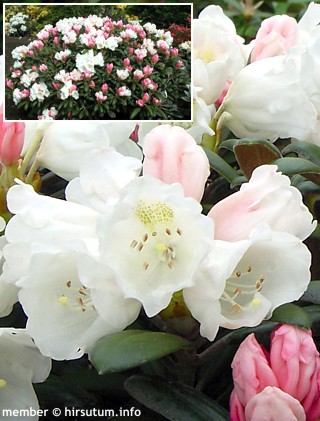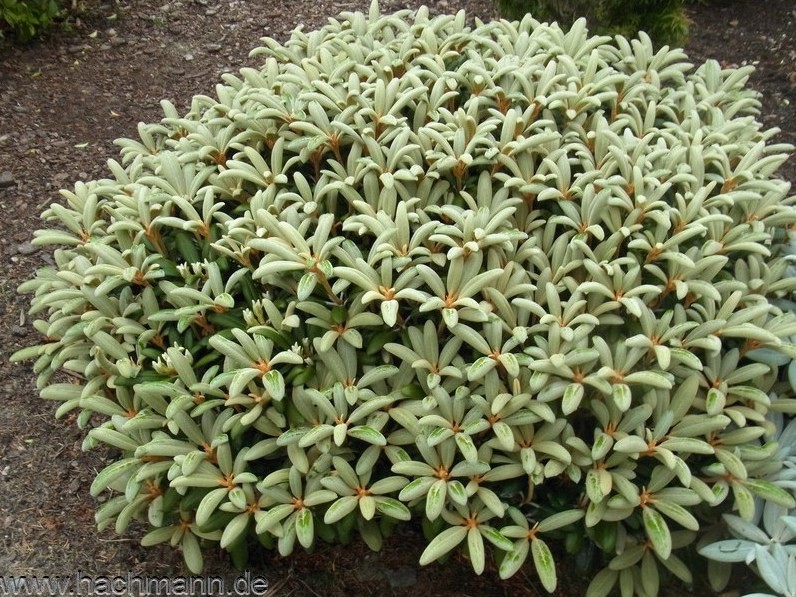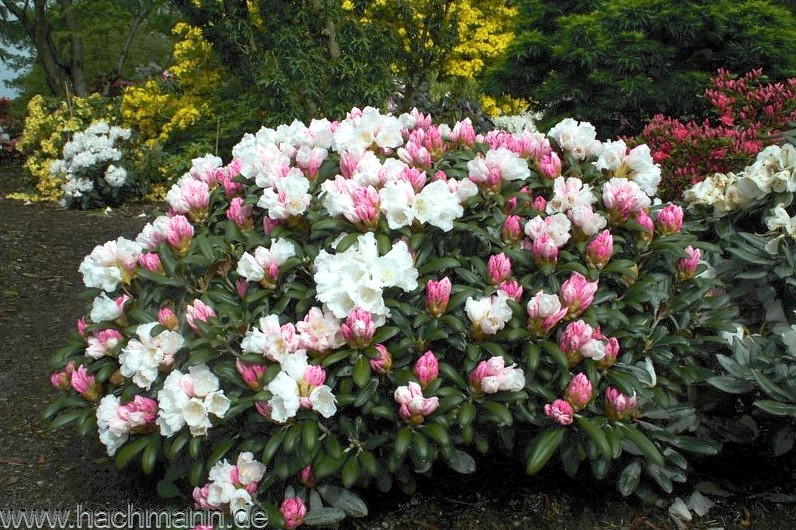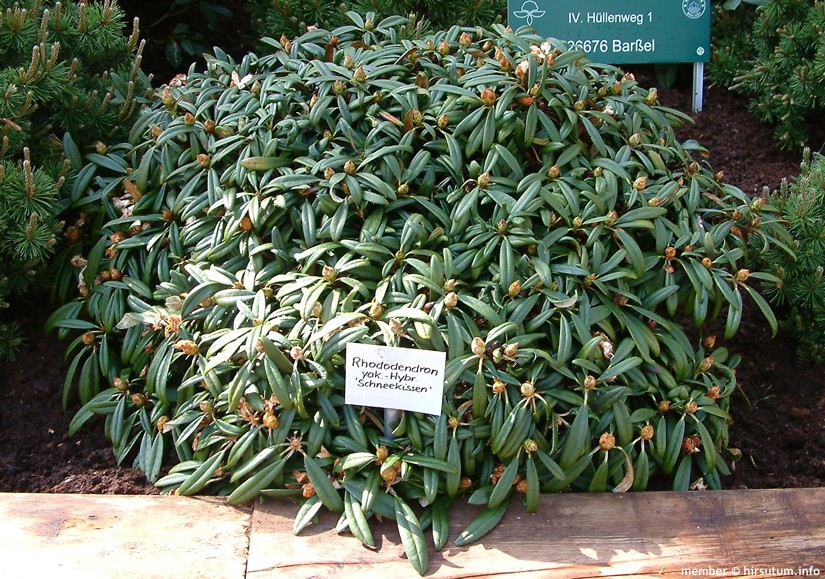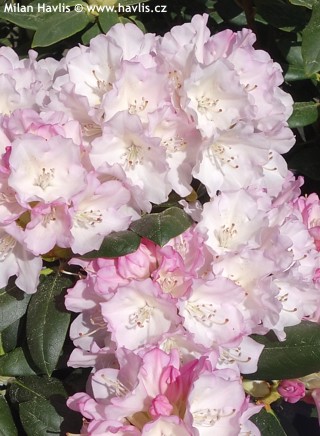Rhododendron (yakushimanum) 'SCHNEEKISSEN' rhododendron
size/type
medium-sized shrub,medium-sized shrub
usual height
0,5-0,8m
usual width
0,5-1m
leaves
evergreen broadleaf
colour of leaves
flowers
showy
colour of flowers
blooming time
May-June
location
full to partial sun
USDA zone (lowest)
5 (down to -29°C)
winter protection
for zone 5+6

for zone 7

categorized
Rhododendron
Yakushimanum rhododendrons were first discovered in early 1900’s on a small island off southern coasts of Japan called Yaku. They grew happily on rocky slopes of this mountainous island in full sun, and were constantly disturbed by wind. Their habit was compact and not very tall. All these features seemed very promising and deserved better examination. The first plants were sent to the UK by a Japanese grower Koichiro Wada in 1934, which set off a long programme of hybridizing brand new, fantastic plants.Description of the plant:
Schneekissen means 'Snow Cushion'. This yaku rhododendron is truly as beautiful as its poetic name. Profusion of snow white, broadly funnel-shaped flowers open late in the season from congested trusses of 9-12 pink buds. Late flowering starts in the last decade of May and lasts until mid June. Even without flowers this shrub is highly decorative thanks to its super handsome foliage. The leaves are evergreen, narrowly ovate, convex, dark green and glossy when mature, and covered with light silvery blue-green indumentum when young. Schneekissen grows slowly into a neat, compact, rounded shrub of cushion-like habit. Bred by Hans Hachmann in 1989 as a selection of the wild species rhododendron degronianum ssp.yakushimanum var. yakushimanum, originally found on the largest Japanese island Honshu, and partly mutated on elevated parts of Yakushima Island, about 1200 m above sea level and higher. Tests proved that deadheading of these hybrids does not influence formation of flower buds for the following season. However, as these plants are slow growers and make short new branches, deadheading significantly improves their appearance since the new shoots cannot cover the unsightly dry seed-pods that followed the flowers.
Yakushimanum rhododendrons grow slowly, forming compact mounds. Their mature leaves usually have indumentum of various colours on the undersides. They thrive in full sun and partial shade, they can take full shade, too, but is not ideal. The soil has to be reasonably fertile, well-drained, cool, constantly moist, and of low pH (6 or less) = acidic. They do not require nitrogen but need iron and phosphorus. Their roots spread outwards and are very shallow, therefore never plant them too deep. When planting mix good, lime-free compost with quality peat or leaf mould, and add some slow-release fertilizer. To conserve moisture and to suppress weeds keep them mulched all year round. The layer of mulch should not be too high so that their delicate roots can breathe. No pruning required. Schneekissen is quite hardy and reliably hardy to -27°C (USDA zone 5b), and may take a couple of degrees lower.
Last update 02-02-2017
QUICK PRICE OVERVIEW
CURRENTLY SOLD OUT
WANT TO TRY A SIMILAR PLANT?












